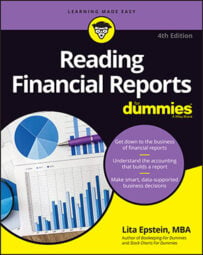Financial report readers should be aware of creating accounting tricks. Enron, once the world's largest energy trader, now lives in infamy as the host of one of the world's largest accounting scandals.
After the company declared bankruptcy in 2001, Congress enacted legislation to correct the flaws in the U.S. financial reporting system and protect investors and consumers from misleading accounting practices. But corporate lobbyists are powerful, and Congress continues to get pressure to weaken the legislation passed after the Enron scandal because the companies think the new laws are too burdensome.
In the meantime, the public's faith in corporate financial accounting has drastically fallen, in large part because of the glut of creative accounting that came to light during the late 1990s and continued to rear its ugly head in 2007 during the scandals related to the mortgage mess. More rules for Wall Street were added with the passage of the Dodd-Frank Wall Street Reform and Consumer Protection Act of 2010.
Companies that practice creative accounting deviate from generally accepted accounting principles (GAAP). The financial reports they issue use loopholes in financial laws in ways that are, at the very least, misleading and, in some cases illegal, to gain an advantage for the company over the users of those financial reports.
The scope of the problem
In the hundreds of cases in which companies restated their earnings, company insiders used creative accounting techniques to cook the books. And when trying to unearth the accounting problem, you have to be creative yourself.
In these scandals, some company insiders used corporate accounts for personal purposes, such as buying expensive cars or numerous houses and taking luxury trips — all at the expense of shareholders. Instead of using profits to grow the company and increase the stock's value for the stockholders, these insiders lined their own pockets. How did they get away with that?
Well, most board members were closely tied to the corporate chiefs, which means that no one was really watching the cookie jar — or the hands going into it.
Company insiders use different techniques to cook the books. In some cases, earnings are managed, meaning that companies use legitimate accounting methods in aggressive ways to get bottom-line results they need. Other companies present revenues that are pure fiction. Still others toy with how they handle their capital financing, or overvalue their assets, or undervalue their liabilities. Insiders who want to deceive company outsiders can use a variety of tactics.
How to see through cooked books
Former Securities and Exchange Commission (SEC) chairman Arthur Levitt groups these creative techniques — which he calls “accounting hocus-pocus” — into the following five categories.
Too often, you don't find out about the deception until someone inside the company decides to blow the whistle or the company seeks bankruptcy protection.
Big-bath charges
Company insiders use this technique to clean up their balance sheet by giving it a “big bath,” meaning they wash away past financial problems. When earnings take a big hit, some executives hope that Wall Street will look beyond a one-time loss and focus on future earnings.
A good time to use this practice is when the company decides to restructure some parts of its business. During the restructuring process, executives can clean up any problems in previous reporting. This cleaning process may include hiding past financial reporting problems.
Creative acquisition accounting
Levitt also calls this category “merger magic” because it includes the technique in which companies use acquisitions to hide problems. It's particularly useful when the acquisition is a stock exchange rather than a cash exchange. By setting a stock price for an acquisition that enables a company to hide previous problems, a lot of past accounting problems can disappear like magic because the higher stock price covers up the problems.
Most times, company insiders can erase the problems in a popular write-off called in-process research and development, which is a one-time charge mentioned in the notes to the financial statements detailing an acquisition.
Miscellaneous cookie jar reserves
Companies that use liabilities rather than revenue to hide problems do so by using what Levitt calls “cookie jars.” When using this technique, company insiders make unrealistic assumptions about company liabilities. In a good year, a firm assumes that its sales returns will be much higher than they have been historically.
These higher assumptions are “banked” as a liability, which means they're added to an accrual account that can be adjusted in a later year. When a business has a bad year and needs to manage its earnings, it can massage those earnings by reducing the actual sales returns, using some of the banked sales returns from the cookie jar.
Materiality
In accounting, the generally accepted principle is to report only financial matters that can have a material effect on a company's earnings. Whether an item has a material effect on the company's bottom line is purely a judgment call made by company executives and the auditors.
Firms that play the materiality game set a percentage ceiling under which errors don't matter because they're not material. For example, the multibillion-dollar company may decide that as long as errors reflect less than 5 percent of any department's revenues, the error isn't material to the company's results.
But those little errors can add up when spread carefully across a firm's financial reports. Sometimes small errors can help a business make up for the 1- or 2-cent loss per share. Anytime a company misses Wall Street expectations — even by pennies — the stock price takes a drop, and the company's overall value on the market may also fall by millions of dollars.
Revenue recognition
Companies using this technique boost their earnings by manipulating the way they count sales. For example, these companies recognize a sale before it's complete or count something as sold even though the customer still has options to terminate, void, or delay the sale.

